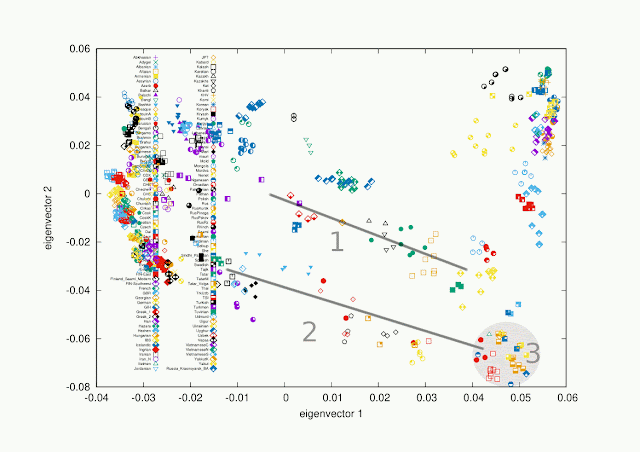It has gone a couple of years since a new Siberian-like Bronze Age sample was found from Central Siberian Krasnoyarsk. Almost every blogger being interested in population genetics started soon to speculate if this Bronze Age man belonged to the first speakers of Uralic languages and the reason was, actually two reasons, Siberian origin and that the man belonged to the male haplogroup N. In my opinion this conclusion was debatable. Definitely he belonged to purest North Siberians, among many other Siberian people. Definitely the yDna haplogoup N is common among modern Uralic speakers, but N is common also in other language groups. Genes don't have language, languages don't have genes. This poor Bronze Age man will never reveal his language. Only thing common with his genes and the origin of Uralic languages is Siberia. Can we say that only one language was spoken in an area extending thousands kilometers to every direction, that this man and his kinship kept connection by yoiking over hundreds kilometers? Languages need common society and culture to strenghten enough to make further expansions. One man has one male haplogroup, but he needs society and common culture within a larger social context to be able to advance something. In the other hand even his genes were not unique in Siberia.
To have something real in my hands I made tests, a PCA-plot and a series of qp3Pop analyses. On the PCA there was nothing particular to mention; the Krasnoyarsk man was on two first dimensions pretty much like many other pure Siberians. Making Eurogenes G25-style multifimensional analysis would be great, maybe Eurogenes want to do it. But then the f3-analysis revealed something. I made two analyses comparing almost all populations I found in the North Siberia-Europe cline to Nganasans and to the Krasnoyarsk man. Finally I divided the Krasnoyarsk result by the Nganasan result to get the ratio of all population in the cline. The ratio revealed that despite of small Siberian admixture some populations had a high Krasnoyarsk ratio, including Finns. May this mean that those with high ratio formed at least partially the westward migration of Uralic speakers?
2 - North Siberia - Europe cline
3 - North Siberians
Green color - high Krasnoyarsk_BA ratio.


No comments:
Post a Comment
English preferred, because readers are international.
No more Anonymous posts.